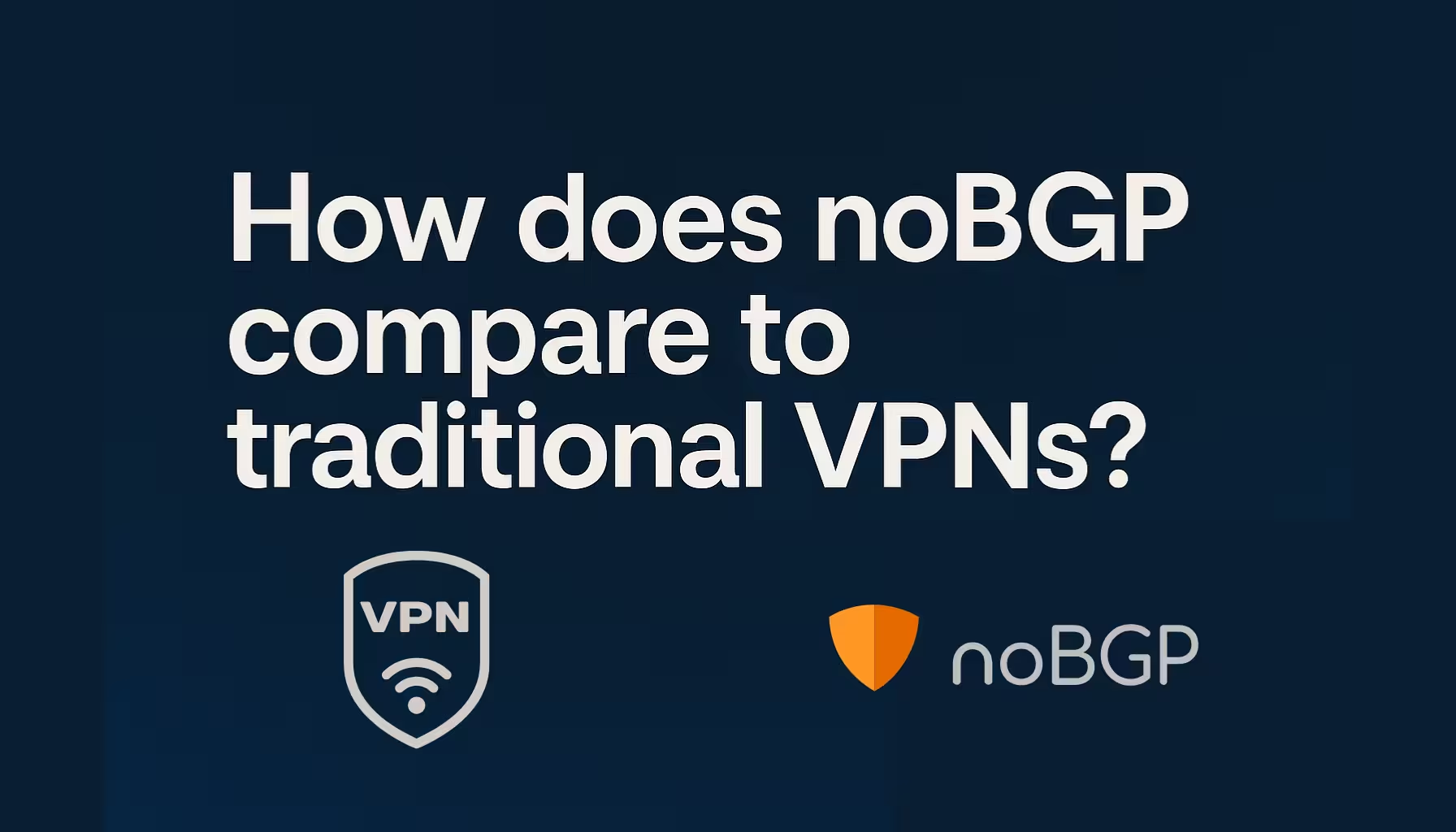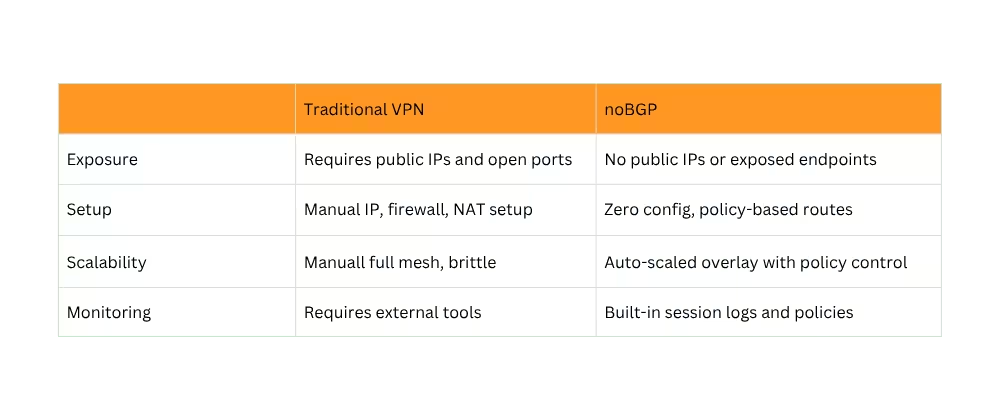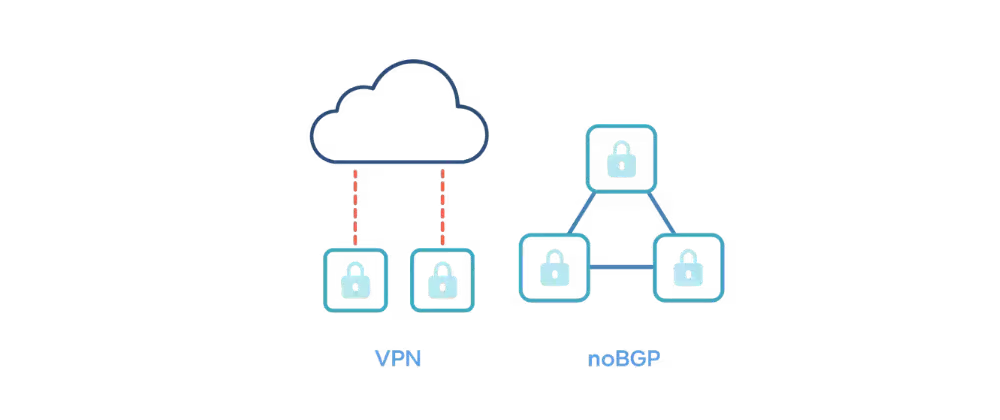
VPNs have been the go-to solution for securing network access for over two decades. Whether you’re connecting remote workers, cloud workloads, or data centers, chances are a VPN is involved. But VPNs were built for a different era, and their limitations show in today’s dynamic, distributed environments.
noBGP offers a modern alternative to VPNs by eliminating the complexity, exposure, and rigidity of legacy network connections. The platform enables private, secure, and policy-driven connectivity without relying on IP-based tunnels.
This article compares traditional VPNs vs. noBGP and shows why developers, IT teams, and security architects choose noBGP for secure workload-to-workload communication.
A Virtual Private Network (VPN) creates an encrypted tunnel between two points over the public internet. Organizations commonly use VPNs to:
While VPNs provide encryption and access control, they come with drawbacks, especially at scale.
Even though VPNs encrypt traffic, the endpoints themselves must have public IPs or open firewall ports. This increases your attack surface.
Setting up VPNs requires:
And when something breaks? Debugging is painful and non-obvious.
VPNs don’t scale easily. Connecting multiple regions, tenants, or clouds often leads to:
noBGP provides a modern networking architecture that delivers identity-based, encrypted, and deterministic communication between workloads anywhere.
Here’s how noBGP compares to VPNs:

With noBGP, your workloads don’t need public IPs to be reachable. All connections initiate outbound using secure identities. There’s:
You don’t need to manage IP routes, CIDR overlaps, or NAT gateways. Define what service should talk to what; no network engineering required.
Traditional VPNs struggle with multi-cloud and hybrid environments. noBGP thrives in them, offering seamless overlay connectivity across:
Overlapping CIDR blocks? No problem. Since noBGP uses identities, not IPs, you connect any workload without re-IPing or building custom NAT rules.

If you’re experiencing any of the following, the time has come to consider a shift:
✅ Your VPN setup grows in complexity
✅ You’re expanding across clouds or regions
✅ You’re tired of managing IPs, ports, and firewall rules
✅ You need temporary, scoped access (e.g. CI/CD, contractors)
Engineers built traditional VPNs when networks were static and users worked in offices. That’s no longer the world we live in.
noBGP offers:
This isn’t a VPN replacement; this is a rethink of networking itself.